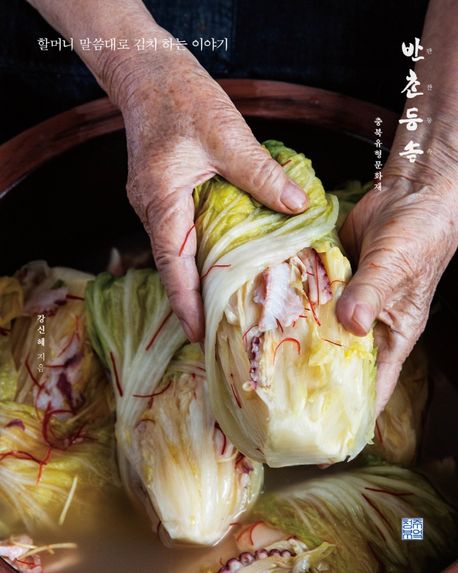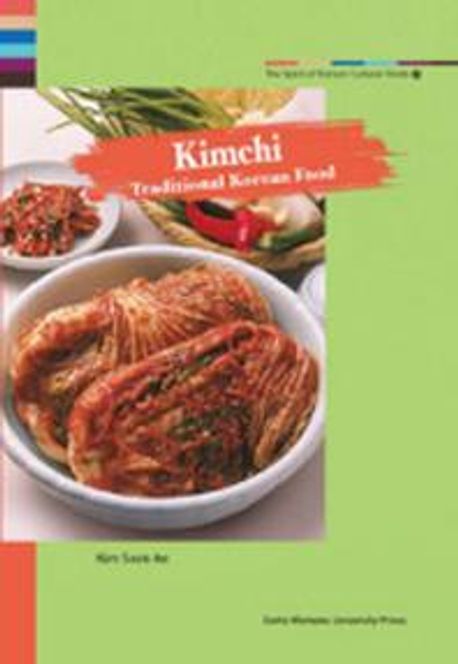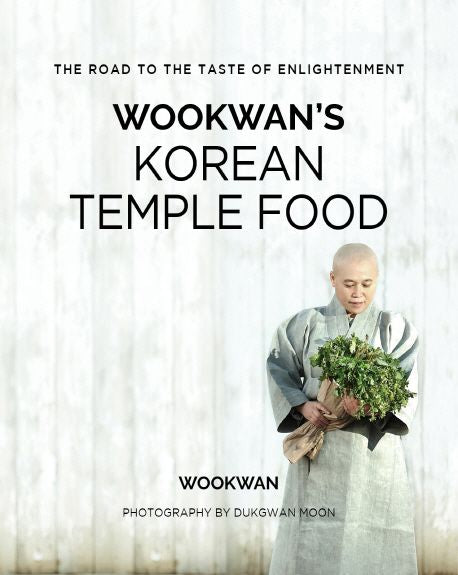{"id":9058387755226,"title":"Grandmother’s Kimchi Wisdom Tales from Korean Kitchen Traditions Korean Edition","handle":"wookwan-s-korean-temple-food-korean-edition-1","description":"\u003cblockquote data-start=\"172\" data-end=\"424\"\u003e\n\u003cp data-start=\"393\" data-end=\"875\"\u003eStep back in time to the year \u003cstrong data-start=\"423\" data-end=\"431\"\u003e1913\u003c\/strong\u003e, when the city of \u003cstrong data-start=\"450\" data-end=\"462\"\u003eCheongju\u003c\/strong\u003e in Korea preserved the essence of daily life through food.\u003cbr data-start=\"521\" data-end=\"524\"\u003eThis book unearths a rare culinary record, \u003cem data-start=\"567\" data-end=\"584\"\u003eBanchandeungsok\u003c\/em\u003e (반찬등속), one of the earliest Korean cookbooks that documented \u003cstrong data-start=\"646\" data-end=\"670\"\u003enine kinds of kimchi\u003c\/strong\u003e made over a century ago — including \u003cem data-start=\"707\" data-end=\"734\"\u003emu kimchi (radish kimchi)\u003c\/em\u003e, \u003cem data-start=\"736\" data-end=\"746\"\u003ekkakdugi\u003c\/em\u003e, \u003cem data-start=\"748\" data-end=\"762\"\u003egochu kimchi\u003c\/em\u003e, \u003cem data-start=\"764\" data-end=\"793\"\u003eoi kimchi (cucumber kimchi)\u003c\/em\u003e, \u003cem data-start=\"795\" data-end=\"826\"\u003egatdegi (mustard leaf kimchi)\u003c\/em\u003e, and \u003cem data-start=\"832\" data-end=\"873\"\u003ebaechu jjanji (salted cabbage pickles).\u003c\/em\u003e\u003c\/p\u003e\n\u003cp data-start=\"877\" data-end=\"1224\"\u003eThrough these recipes, we rediscover how Koreans of the early 20th century viewed flavor, balance, and seasonality — long before refrigeration or modern condiments.\u003cbr data-start=\"1041\" data-end=\"1044\"\u003eEach page connects food with memory, community, and the humble wisdom of grandmothers who measured salt with their fingertips and trusted their senses more than any written rule.\u003c\/p\u003e\n\u003cp data-start=\"1226\" data-end=\"1565\"\u003eDrawing on \u003cstrong data-start=\"1237\" data-end=\"1283\"\u003eancient culinary texts and old manuscripts\u003c\/strong\u003e, the book traces the \u003cstrong data-start=\"1305\" data-end=\"1328\"\u003eevolution of kimchi\u003c\/strong\u003e from its earliest salted-vegetable forms to the red, spicy versions known today.\u003cbr data-start=\"1409\" data-end=\"1412\"\u003eIt also explores how the introduction of chili peppers transformed Korea’s food culture — turning simple preserved vegetables into a national identity.\u003c\/p\u003e\n\u003cblockquote data-start=\"1567\" data-end=\"1645\"\u003e\n\u003cp data-start=\"1569\" data-end=\"1645\"\u003e“\u003cem data-start=\"1570\" data-end=\"1644\"\u003eKimchi is not just a side dish; it is a story of time, land, and people.\u003c\/em\u003e”\u003c\/p\u003e\n\u003c\/blockquote\u003e\n\u003cp data-start=\"1647\" data-end=\"2004\"\u003eThis volume offers both cultural insight and culinary history — a perfect companion for readers interested in \u003cstrong data-start=\"1757\" data-end=\"1781\"\u003eKorean food heritage\u003c\/strong\u003e, \u003cstrong data-start=\"1783\" data-end=\"1799\"\u003efermentation\u003c\/strong\u003e, and \u003cstrong data-start=\"1805\" data-end=\"1840\"\u003etraditional plant-based cuisine\u003c\/strong\u003e.\u003cbr data-start=\"1841\" data-end=\"1844\"\u003eWhether you are a chef, food historian, or simply a lover of Korean culture, \u003cem data-start=\"1921\" data-end=\"1959\"\u003eStories of Kimchi from a Century Ago\u003c\/em\u003e invites you to taste the wisdom of the past.\u003c\/p\u003e\n\u003c\/blockquote\u003e","published_at":"2025-10-17T13:17:11+09:00","created_at":"2025-10-17T13:12:17+09:00","vendor":"Cheongju Kitchen","type":"Korean Cookbook","tags":["kimchi recipes","Korean cookbook","Temple Food Korean","traditional Korean cuisine"],"price":2300,"price_min":2300,"price_max":2300,"available":true,"price_varies":false,"compare_at_price":null,"compare_at_price_min":0,"compare_at_price_max":0,"compare_at_price_varies":false,"variants":[{"id":47030528147674,"title":"Default Title","option1":"Default Title","option2":null,"option3":null,"sku":null,"requires_shipping":true,"taxable":true,"featured_image":null,"available":true,"name":"Grandmother’s Kimchi Wisdom Tales from Korean Kitchen Traditions Korean Edition","public_title":null,"options":["Default Title"],"price":2300,"weight":500,"compare_at_price":null,"inventory_quantity":20,"inventory_management":"shopify","inventory_policy":"deny","barcode":null,"requires_selling_plan":false,"selling_plan_allocations":[]}],"images":["\/\/i-eung.com\/cdn\/shop\/files\/Grandmother_sKimchiWisdomTalesfromKoreanKitchenTraditions.jpg?v=1760674365","\/\/i-eung.com\/cdn\/shop\/files\/Wookwan_s_Korean_Temple_Food-1.jpg?v=1760674388"],"featured_image":"\/\/i-eung.com\/cdn\/shop\/files\/Grandmother_sKimchiWisdomTalesfromKoreanKitchenTraditions.jpg?v=1760674365","options":["Title"],"media":[{"alt":null,"id":40353216233690,"position":1,"preview_image":{"aspect_ratio":0.799,"height":573,"width":458,"src":"\/\/i-eung.com\/cdn\/shop\/files\/Grandmother_sKimchiWisdomTalesfromKoreanKitchenTraditions.jpg?v=1760674365"},"aspect_ratio":0.799,"height":573,"media_type":"image","src":"\/\/i-eung.com\/cdn\/shop\/files\/Grandmother_sKimchiWisdomTalesfromKoreanKitchenTraditions.jpg?v=1760674365","width":458},{"alt":null,"id":40353217609946,"position":2,"preview_image":{"aspect_ratio":0.2,"height":4069,"width":814,"src":"\/\/i-eung.com\/cdn\/shop\/files\/Wookwan_s_Korean_Temple_Food-1.jpg?v=1760674388"},"aspect_ratio":0.2,"height":4069,"media_type":"image","src":"\/\/i-eung.com\/cdn\/shop\/files\/Wookwan_s_Korean_Temple_Food-1.jpg?v=1760674388","width":814}],"requires_selling_plan":false,"selling_plan_groups":[],"content":"\u003cblockquote data-start=\"172\" data-end=\"424\"\u003e\n\u003cp data-start=\"393\" data-end=\"875\"\u003eStep back in time to the year \u003cstrong data-start=\"423\" data-end=\"431\"\u003e1913\u003c\/strong\u003e, when the city of \u003cstrong data-start=\"450\" data-end=\"462\"\u003eCheongju\u003c\/strong\u003e in Korea preserved the essence of daily life through food.\u003cbr data-start=\"521\" data-end=\"524\"\u003eThis book unearths a rare culinary record, \u003cem data-start=\"567\" data-end=\"584\"\u003eBanchandeungsok\u003c\/em\u003e (반찬등속), one of the earliest Korean cookbooks that documented \u003cstrong data-start=\"646\" data-end=\"670\"\u003enine kinds of kimchi\u003c\/strong\u003e made over a century ago — including \u003cem data-start=\"707\" data-end=\"734\"\u003emu kimchi (radish kimchi)\u003c\/em\u003e, \u003cem data-start=\"736\" data-end=\"746\"\u003ekkakdugi\u003c\/em\u003e, \u003cem data-start=\"748\" data-end=\"762\"\u003egochu kimchi\u003c\/em\u003e, \u003cem data-start=\"764\" data-end=\"793\"\u003eoi kimchi (cucumber kimchi)\u003c\/em\u003e, \u003cem data-start=\"795\" data-end=\"826\"\u003egatdegi (mustard leaf kimchi)\u003c\/em\u003e, and \u003cem data-start=\"832\" data-end=\"873\"\u003ebaechu jjanji (salted cabbage pickles).\u003c\/em\u003e\u003c\/p\u003e\n\u003cp data-start=\"877\" data-end=\"1224\"\u003eThrough these recipes, we rediscover how Koreans of the early 20th century viewed flavor, balance, and seasonality — long before refrigeration or modern condiments.\u003cbr data-start=\"1041\" data-end=\"1044\"\u003eEach page connects food with memory, community, and the humble wisdom of grandmothers who measured salt with their fingertips and trusted their senses more than any written rule.\u003c\/p\u003e\n\u003cp data-start=\"1226\" data-end=\"1565\"\u003eDrawing on \u003cstrong data-start=\"1237\" data-end=\"1283\"\u003eancient culinary texts and old manuscripts\u003c\/strong\u003e, the book traces the \u003cstrong data-start=\"1305\" data-end=\"1328\"\u003eevolution of kimchi\u003c\/strong\u003e from its earliest salted-vegetable forms to the red, spicy versions known today.\u003cbr data-start=\"1409\" data-end=\"1412\"\u003eIt also explores how the introduction of chili peppers transformed Korea’s food culture — turning simple preserved vegetables into a national identity.\u003c\/p\u003e\n\u003cblockquote data-start=\"1567\" data-end=\"1645\"\u003e\n\u003cp data-start=\"1569\" data-end=\"1645\"\u003e“\u003cem data-start=\"1570\" data-end=\"1644\"\u003eKimchi is not just a side dish; it is a story of time, land, and people.\u003c\/em\u003e”\u003c\/p\u003e\n\u003c\/blockquote\u003e\n\u003cp data-start=\"1647\" data-end=\"2004\"\u003eThis volume offers both cultural insight and culinary history — a perfect companion for readers interested in \u003cstrong data-start=\"1757\" data-end=\"1781\"\u003eKorean food heritage\u003c\/strong\u003e, \u003cstrong data-start=\"1783\" data-end=\"1799\"\u003efermentation\u003c\/strong\u003e, and \u003cstrong data-start=\"1805\" data-end=\"1840\"\u003etraditional plant-based cuisine\u003c\/strong\u003e.\u003cbr data-start=\"1841\" data-end=\"1844\"\u003eWhether you are a chef, food historian, or simply a lover of Korean culture, \u003cem data-start=\"1921\" data-end=\"1959\"\u003eStories of Kimchi from a Century Ago\u003c\/em\u003e invites you to taste the wisdom of the past.\u003c\/p\u003e\n\u003c\/blockquote\u003e"}



